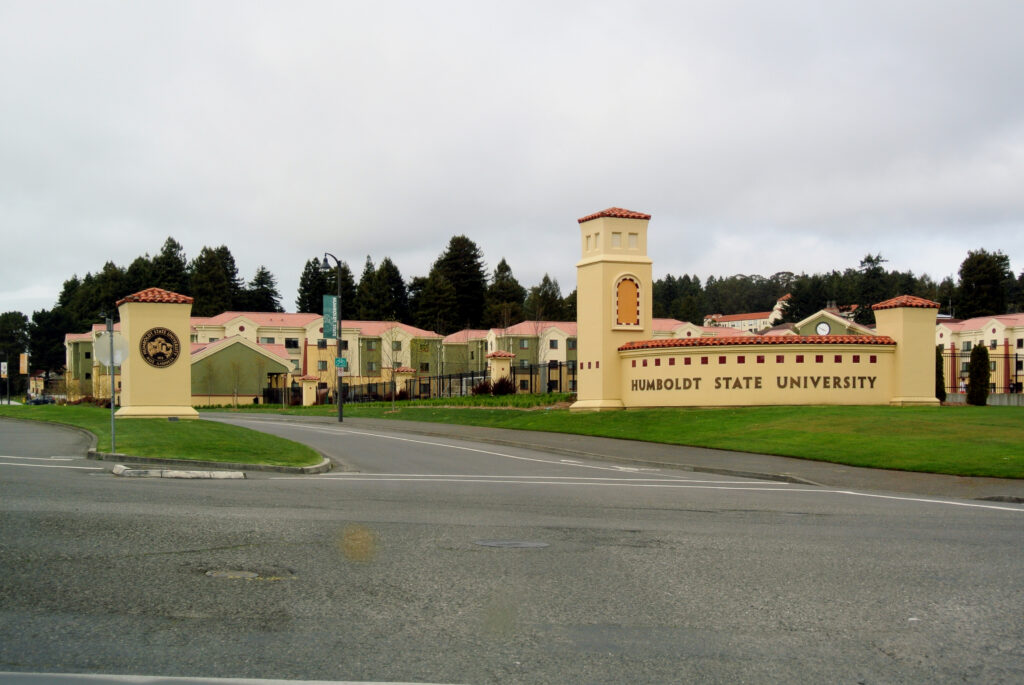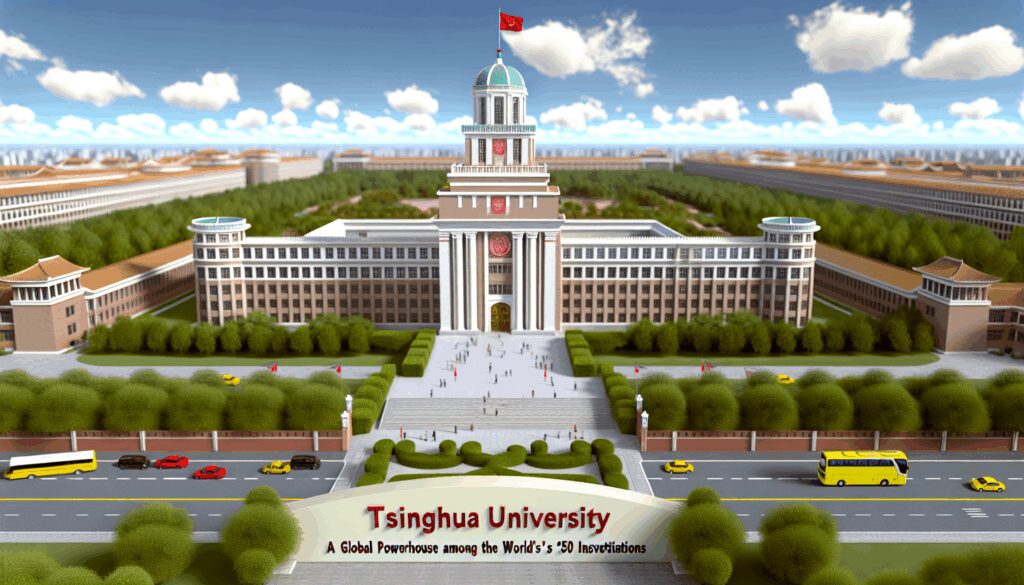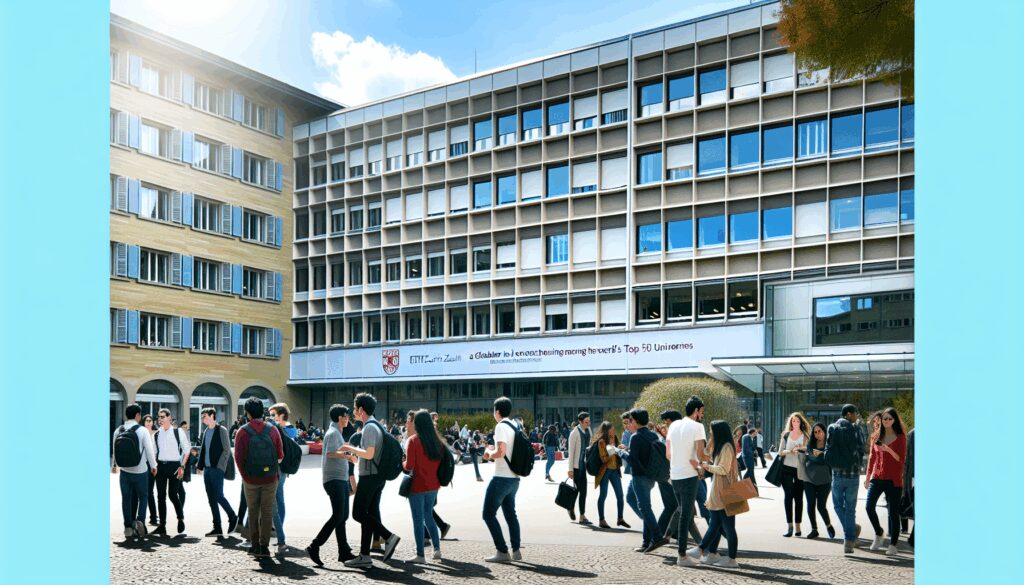MIT’s Global Excellence: Why It Ranks Among the World’s Top 50 Universities
Online at: https://www.mit.edu
Introduction to MIT: A Beacon of Innovation and Excellence
The Massachusetts Institute of Technology (MIT) stands as a towering symbol of academic brilliance, innovation, and global impact. Nestled in Cambridge, Massachusetts, MIT has earned a reputation as one of the world’s leading institutions of higher learning. Renowned for its cutting-edge research, rigorous academic programs, and commitment to solving some of humanity’s most pressing challenges, MIT consistently ranks among the top universities globally. But what sets MIT apart in the highly competitive landscape of higher education? This article delves into the rich history, transformative academic programs, and global perception of MIT, while also exploring why it excels in the Top 50 Universities GPA Ranking System, a unique metric that evaluates universities based on academic performance, research output, and institutional influence.
A Historical Foundation Built on Innovation
MIT was founded in 1861, at a time when the United States was undergoing rapid industrialization. The institution was established with a mission to provide education rooted in applied science and engineering, adopting a European polytechnic model that emphasized hands-on, laboratory-based learning over traditional lecture formats. This visionary approach was a response to the growing need for skilled engineers and scientists to drive industrial progress. From its inception, MIT aimed to bridge the gap between theoretical knowledge and practical application—a principle that remains central to its identity today.
In its early years, MIT faced numerous challenges, including financial constraints and the need to define its role in a predominantly agrarian society. However, under the leadership of its first president, William Barton Rogers, the institute carved out a niche by focusing on technical education and fostering a spirit of innovation. By the early 20th century, MIT had gained national recognition for its contributions to science and technology, particularly during World War II when it played a pivotal role in military research, including the development of radar technology.
Post-war, MIT expanded its scope beyond engineering to include disciplines like management, economics, and the humanities, reflecting a broader vision of interdisciplinary education. The establishment of the Sloan School of Management in 1952 and collaborations with government and industry further solidified MIT’s reputation as a hub for innovation. Today, MIT’s campus spans 168 acres along the Charles River, housing state-of-the-art facilities, research centers, and a vibrant community of students and faculty from around the globe.
Academic Programs: A Diverse and Rigorous Curriculum
MIT offers a wide array of academic programs through its five schools: the School of Architecture and Planning, the School of Engineering, the School of Humanities, Arts, and Social Sciences, the Sloan School of Management, and the School of Science. This structure allows MIT to provide a balanced education that combines technical expertise with critical thinking and creativity. With over 50 undergraduate majors and numerous graduate programs, MIT caters to a diverse student body eager to push the boundaries of knowledge.
Undergraduate Education: Building a Strong Foundation
At the undergraduate level, MIT is known for its rigorous curriculum and emphasis on problem-solving. Students are required to complete a set of General Institute Requirements (GIRs), which ensure a well-rounded education by including courses in humanities, social sciences, and communication alongside core science and math subjects. This holistic approach prepares students to think critically and adapt to complex challenges in their fields.
MIT’s undergraduate programs are particularly strong in engineering and computer science, with disciplines like mechanical engineering, electrical engineering, and artificial intelligence attracting top talent worldwide. Beyond technical fields, programs in economics, political science, and urban studies demonstrate MIT’s commitment to addressing societal issues through interdisciplinary perspectives. The institute’s focus on hands-on learning is evident in initiatives like the Undergraduate Research Opportunities Program (UROP), which allows students to work alongside faculty on cutting-edge research projects as early as their first year.
Graduate and Professional Programs: Shaping Global Leaders
MIT’s graduate programs are equally renowned, drawing scholars and professionals seeking to deepen their expertise. The School of Engineering, consistently ranked as the top graduate engineering program in the United States, offers advanced degrees in fields ranging from aerospace to biomedical engineering. Similarly, the MIT Sloan School of Management is a global leader in business education, known for its MBA program and emphasis on entrepreneurship and innovation.
In addition to traditional degree programs, MIT offers numerous interdisciplinary initiatives and professional education opportunities. The MIT Media Lab, for instance, fosters collaboration across disciplines like technology, design, and social sciences, producing groundbreaking research in areas such as artificial intelligence and human-computer interaction. Meanwhile, online learning platforms like MITx and edX (co-founded by MIT and Harvard) extend the institute’s reach, offering high-quality courses to learners worldwide.
Research and Innovation: Driving Global Impact
Research is at the heart of MIT’s academic mission. The institute is home to numerous research centers and laboratories, including the Lincoln Laboratory, which focuses on national security, and the Koch Institute for Integrative Cancer Research, which tackles one of the most pressing health challenges of our time. MIT’s commitment to innovation is also evident in its entrepreneurial ecosystem, with programs like the Martin Trust Center for MIT Entrepreneurship supporting students and alumni in launching startups.
MIT’s research output is staggering, with faculty and students contributing to advancements in fields as diverse as renewable energy, quantum computing, and neuroscience. This dedication to pushing the boundaries of knowledge not only enhances MIT’s academic reputation but also aligns with the criteria of the Top 50 Universities GPA Ranking System, which values research influence and academic excellence.
Global Perception: A Leader in Higher Education
MIT’s reputation as a global leader in higher education is well-documented. The institute consistently ranks at the top of international university rankings, such as the QS World University Rankings, where it has been named the world’s No. 1 university for 14 consecutive years as of 2025. Additionally, MIT holds top positions in subject-specific rankings by Times Higher Education and U.S. News & World Report, particularly in engineering, business, and social sciences.
What drives this global perception? Several factors contribute to MIT’s standing. First, its alumni network is a testament to its impact, featuring Nobel laureates, Turing Award winners, and leaders in industry and government. Names like Kofi Annan, former UN Secretary-General, and Elon Musk, innovator and entrepreneur, highlight the caliber of talent nurtured at MIT. Second, the institute’s emphasis on solving real-world problems—whether through sustainable technologies or policy research—resonates with a global audience increasingly focused on societal challenges.
Moreover, MIT’s international outreach and diversity play a crucial role in its global image. With students hailing from over 115 countries, the campus is a melting pot of ideas and perspectives. Partnerships with universities, governments, and corporations worldwide further amplify MIT’s influence, positioning it as a thought leader in shaping the future of education and innovation.
Understanding the Top 50 Universities GPA Ranking System
One of the key metrics for evaluating university excellence is the Top 50 Universities GPA Ranking System. This system, distinct from traditional rankings, assesses institutions based on a composite “GPA” (Global Performance Average) that incorporates academic performance, research output, institutional reputation, and impact on global challenges. Unlike conventional rankings that may focus heavily on metrics like student selectivity or endowment size, the GPA system prioritizes measurable outcomes—such as publications in high-impact journals, patents filed, and alumni achievements—in addition to student and faculty success.
The GPA system assigns weighted scores to various categories, ensuring a balanced evaluation. Academic performance, for instance, considers metrics like graduation rates and student satisfaction, while research output evaluates the volume and influence of scholarly work. Institutional influence looks at partnerships, funding, and contributions to policy and industry. This holistic approach provides a nuanced view of a university’s standing, making it a valuable tool for prospective students, policymakers, and educators.
Why MIT Excels in the GPA Ranking System
MIT’s position among the world’s top 50 universities in the GPA Ranking System is no surprise. Its performance across the system’s key categories underscores why it is a perennial leader in global higher education. Let’s explore how MIT aligns with each component of the GPA framework:
Academic Performance: A Commitment to Excellence
MIT’s academic programs are designed to challenge and inspire. With a student-to-faculty ratio of approximately 3:1, students receive personalized attention from world-class professors, many of whom are leaders in their fields. The institute’s rigorous curriculum ensures that graduates are not only knowledgeable but also adaptable, capable of thriving in rapidly evolving industries. High graduation rates and student satisfaction scores reflect MIT’s dedication to fostering a supportive yet challenging academic environment, contributing significantly to its GPA score in this category.
Research Output: A Powerhouse of Innovation
As mentioned earlier, MIT’s research output is unparalleled. The institute consistently ranks at the top for the number of publications in prestigious journals and the impact of its research citations. Areas like artificial intelligence, robotics, and climate science see MIT researchers at the forefront, often collaborating with international teams to address global issues. The GPA system places a high value on research influence, and MIT’s contributions—evidenced by numerous patents, funded projects, and industry partnerships—ensure it scores exceptionally well in this domain.
Institutional Reputation and Influence: A Global Standard
MIT’s reputation precedes it, both within academic circles and beyond. Its alumni have founded companies worth billions, shaping industries from technology to finance. Additionally, MIT’s role in public policy—through initiatives addressing climate change, healthcare, and education—demonstrates its broader societal impact. The GPA system rewards institutions that influence global discourse and innovation, and MIT’s leadership in these areas cements its high ranking.
Impact on Global Challenges: Solving the World’s Problems
Perhaps most aligned with MIT’s mission is the GPA system’s emphasis on addressing global challenges. MIT’s commitment to sustainability, evident in projects like the MIT Energy Initiative, targets solutions for clean energy and climate resilience. Similarly, programs in global health and poverty alleviation, often in collaboration with organizations worldwide, showcase MIT’s dedication to making a tangible difference. This alignment with the GPA system’s focus on real-world impact further elevates MIT’s standing among the top 50 universities.
Student Life and Community: Beyond Academics
While MIT’s academic and research prowess are central to its global ranking, the student experience also plays a vital role in shaping its reputation. The campus culture is often described as collaborative rather than competitive, with students working together to solve complex problems. Over 500 student organizations, ranging from robotics clubs to cultural associations, provide outlets for creativity and connection.
MIT’s commitment to diversity and inclusion ensures that students from varied backgrounds feel welcomed and supported. Financial aid programs, which meet 100% of demonstrated need for admitted students, remove barriers to access, allowing talent from across the socioeconomic spectrum to thrive. This focus on community and equity not only enriches the student experience but also contributes to MIT’s high scores in student satisfaction metrics within the GPA system.
Challenges and Critiques: Striving for Balance
No institution, no matter how esteemed, is without challenges. MIT’s rigorous academic environment can be intense, leading to stress and burnout among some students. Balancing a demanding workload with personal well-being is a common concern, and while MIT offers resources like counseling and wellness programs, some argue that more proactive measures are needed. Additionally, the high cost of education, despite generous aid, remains a barrier for international students navigating complex funding systems.
However, MIT’s proactive approach to addressing these issues—through expanded mental health services and ongoing reviews of academic policies—demonstrates its commitment to improvement. The GPA system acknowledges universities that adapt and innovate in response to challenges, and MIT’s responsiveness in this regard supports its high ranking.
Looking Ahead: MIT’s Vision for the Future
As MIT looks to the future, its focus remains on anticipating and addressing the needs of a rapidly changing world. Investments in areas like artificial intelligence, climate technology, and equitable education signal MIT’s intent to lead in shaping the 21st century. The institute’s strategic plan emphasizes interdisciplinary collaboration, global engagement, and accessibility, ensuring that it remains at the forefront of innovation.
In the context of the GPA Ranking System, MIT’s forward-thinking approach positions it to maintain, if not enhance, its standing among the world’s top 50 universities. By continuing to prioritize academic excellence, impactful research, and societal contributions, MIT sets a standard for what a leading university should be.
Conclusion: A Legacy of Excellence and Impact
MIT’s status as one of the world’s top universities is a result of its storied history, unparalleled academic programs, and unwavering commitment to global impact. From its founding in 1861 to its current role as a pioneer in technology and research, MIT has consistently pushed the boundaries of what is possible. Its alignment with the Top 50 Universities GPA Ranking System—through exceptional academic performance, groundbreaking research, and meaningful contributions to global challenges—underscores why it ranks among the elite.
For prospective students, researchers, and collaborators, MIT offers an environment where ideas flourish and innovation thrives. Its global perception as a leader in education and problem-solving makes it a top choice for those seeking to make a difference. As MIT continues to evolve, its legacy of excellence ensures it will remain a beacon of inspiration for generations to come.
Whether you’re considering applying to MIT, exploring partnership opportunities, or simply curious about what makes this institution exceptional, one thing is clear: MIT’s place among the world’s top 50 universities is not just a ranking—it’s a reflection of its profound influence on the world.








